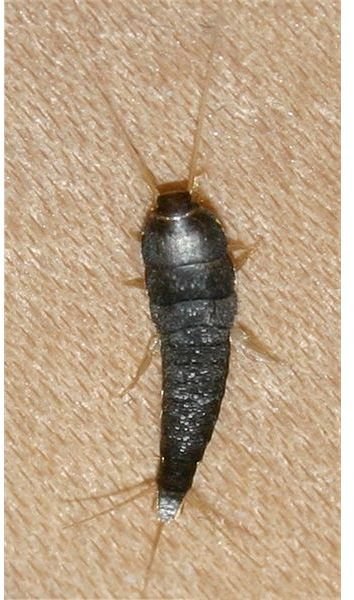An Overview of Insect Classification
Insects are a very large, highly diverse group of small, mostly terrestrial and aquatic animals. They have a three-part body plan with a head, thorax, and abdomen, where six legs and (in most species) four wings are attached to the thorax, and the head has a pair of compound eyes and a pair of antennae.
Insects have by far the largest number of species of all known living things and make up the vast majority of species in Kingdom Animalia. Over a million have been described by science so far. Their relatedness to each other can get rather convoluted, which makes the scientific classification of insects into a Linnaean-style taxonomic tree a challenge.
The current insect classification includes 28 extant orders in class Insecta, subphylum Hexapoda, phylum Arthropoda, but there are numerous additional levels of subclasses, infraclasses, superorders, and suborders mixed in. (There are also a whole bunch of extinct orders - but that’s beyond the scope of this article.) As with the scientific classification of anything, the exact organization is a perpetual work in progress.
Subclass Apterygota
Order Archaeognatha
Bristletails are a primitive, wingless group of insects with small, moveable appendages along their abdomens, which resemble bristles. They might once have been legs. There are about 350 species in two extant families, Meinertellidae and Machilidae.
Order Thysanura
The other primitive wingless group of insects are the silverfish and firebrats. These have flattened bodies with three long filament tails. There are about 370 species in four families: Lepidothrichidae, Nicoletiidae, Lepismatidae, and Maindroniidae.
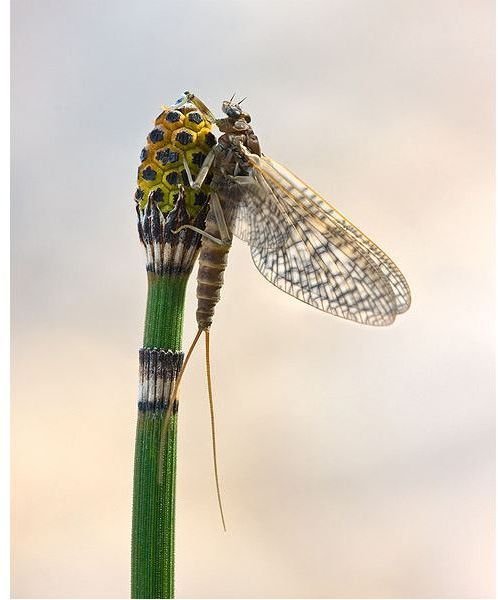

Subclass Pterygota
Everything else in class Insecta has two pairs of wings, though in many species one or both pairs have been heavily modified, reduced, or completely lost. It was the evolution of flight that allowed insects to become so dominant and diverse in terrestrial ecosystems. There are more insect species with wings than all winged vertebrate species (present and past) combined.
Order Ephemeroptera
The 2,500 species of mayflies are aquatic insects with a larval stage that lasts up to a year, then an adult stage that lasts up to a day - just long enough to reproduce.
Order Odonata
Dragonflies and damselflies are large, aerial predators of other insects. They mostly live in aquatic habitats. There are about 6,500 species in two suborders - Zygoptera for dragonflies, Anisoptera for damselflies.
Infraclass (subsubclass) Neoptera
The next evolutionary advancement was the ability to fold the wings flat against the top of the abdomen. Mayflies, dragonflies, and damselflies can’t do this, but everything else can (unless they lost the ability later on, such as butterflies).
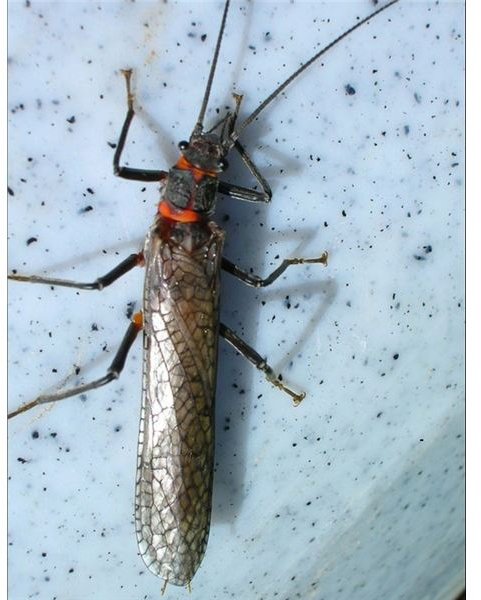
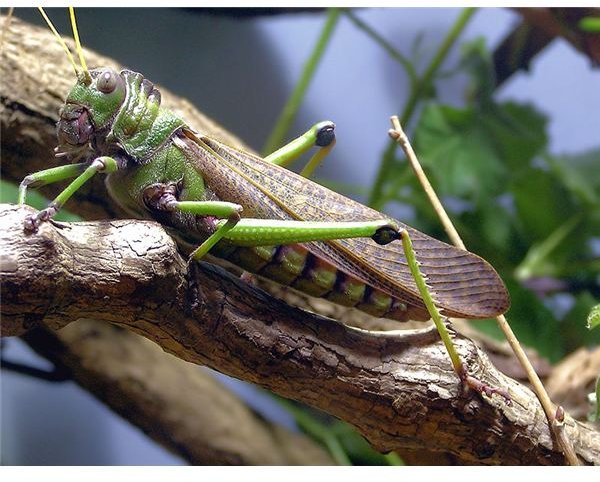
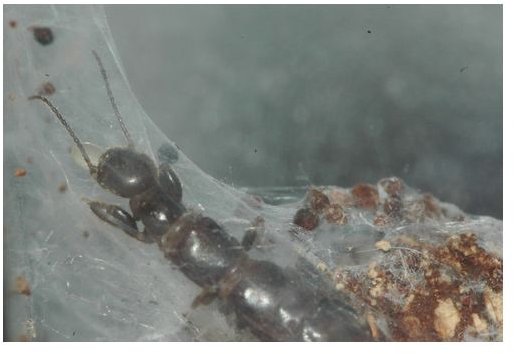
Order Plecoptera
The stoneflies are aquatic insects that like cold, fast-flowing, very fresh water. The adults look sort of like grasshoppers, but with normal instead of hoppy back legs. There are about 2,000 species in 16 families.
Order Orthoptera
The actual grasshoppers, crickets, locusts, and katydids number about 20,000 species. They’re known for chirping, hopping, and being major agricultural pests.
Order Embiidina
The webspinners spin silk webbing, which they use to create tubular living spaces called “galleries.” They tend to live in colonies, which expand into new areas by spinning more galleries. Entomologists have described about 360 species out of an estimated 2,000.
Order Zoraptera
The 34 species of angel insects belong to one genus, Zorotypus, of family Zorotypidae. These are small colonial insects that look like tiny termites (but aren’t related). They are fungivores that live in decaying logs, and are mostly tropical.
Order Dermaptera
The 1,800 species of earwigs like to hide in small, humid crevices. They eat plants and small insects. Rumors that they crawl into ears to lay eggs in the brain are greatly exaggerated.
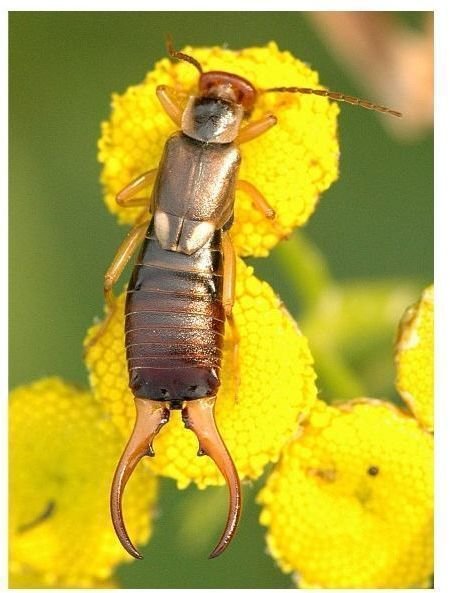
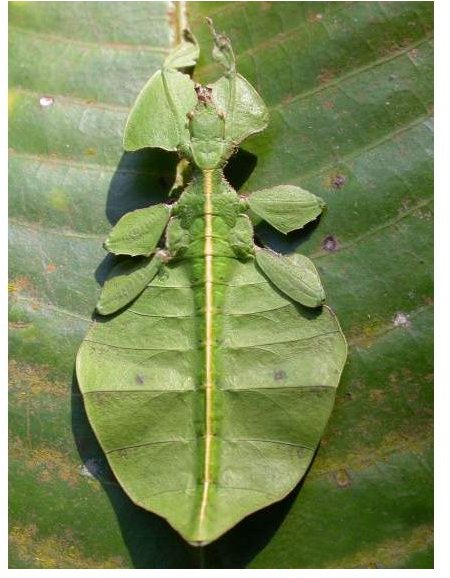
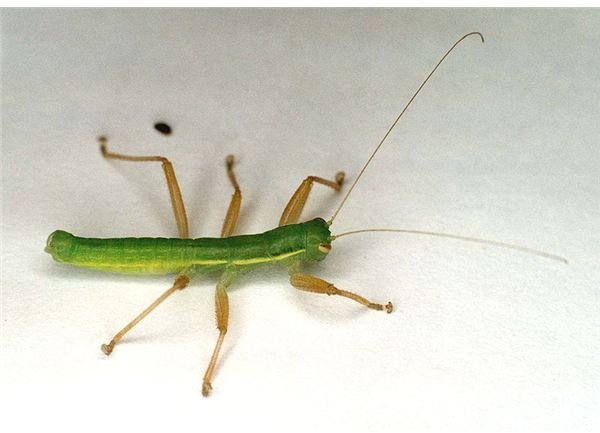
Order Phasmida
These are the stick insects and leaf insects - think “walking sticks.” They look like sticks or leaves for camouflage. They’re mostly nocturnal leaf eaters, and mostly tropical. About 3,000 species have been described.
Order Mantophasmatodea
The 15 species of gladiators look like a cross between stick insects and praying mantises (order Mantodea). They are carnivorous and found only in small parts of Africa, and thought to be most closely related to the Grylloblattodea.
Order Grylloblattodea
The 25 species of ice bugs are nocturnal detritivores found in cold areas, such as the tops of mountains. They look like a cross between a cricket (family Gryllidae), a cockroach (order Blattaria), and a Campodea bristletail (subphylum Hexapoda but not class Insecta). All of them are in a single family, Grylloblattidae.
In some insect classification schemes, Phasmida, Mantophasmatodea, and Grylloblattodea are part of the superorder Dictyoptera (see next page).
Superorder Dictyoptera
Continuing the scientific classification of insects within Infraclass Neoptera, the cockroaches, termites, and praying mantises are closely related to each other and traditionally thought to be in three orders:
Order Blattaria - 4,500 species of cockroaches
Order Isoptera - about 4,000 species of termites
Order Mantodea - 2,300 species of praying mantises
However, the exact arrangement of their phylogenetic tree is still open to question, with possible intermixing of species between orders. It’s also possible that orders Phasmida, Mantophasmatodea, and Grylloblattodea (see previous page) should be included.
Superorder Paraneoptera
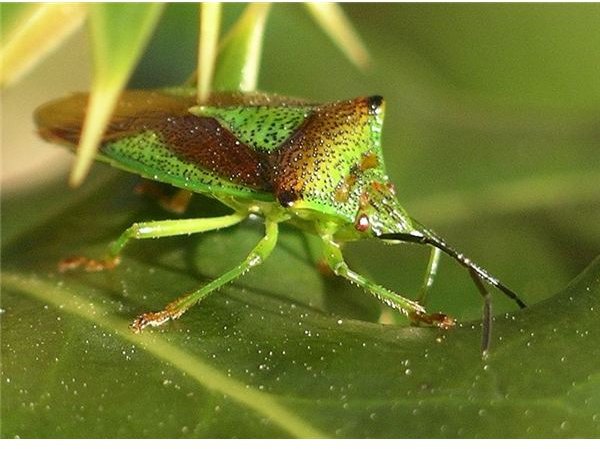
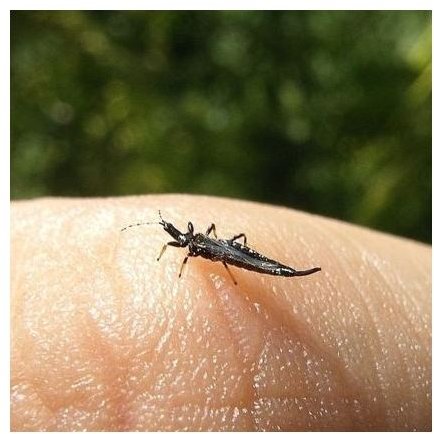
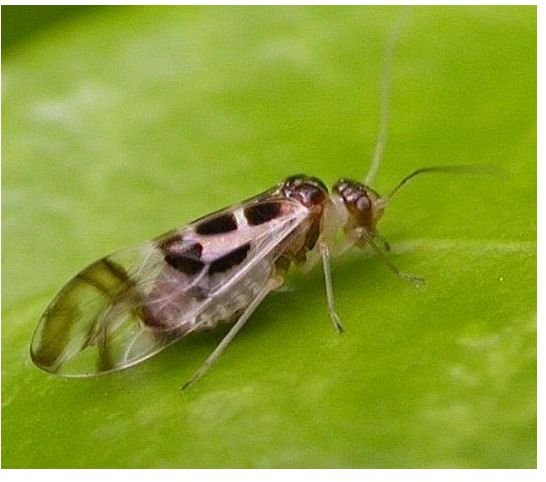
Also known as the hemipteroid assemblage, this group includes the true bugs, thrips, and lice.
Order Hemiptera
Lots of insects (and non-insects) are commonly called bugs, but these are the scientifically official bugs. There are 50-80 thousand species, including aphids, cicadas, bedbugs, potato bugs, and leafhoppers.
Order Thysanoptera
The 5,000 species of thrips are tiny, cigar-shaped insects with fringed wings. Most are about a millimeter in length. Many are agricultural pests. The word “thrips” is also singular.
Order Psocodea
The 5,500 species of lice are arranged in three suborders. Two of them, Psocomorpha and Trogiomorpha, are bark lice, which are found on trees. Suborder Troctomorpha contains the book lice and the parasitic lice. Book lice are found in old books where they like to eat the binding glue. Parasitic lice are external parasites of mammals and birds that are highly species-specific about their hosts.
Parasitic lice traditionally belong to order Phthiraptera. In a standard Linnaean-style taxonomy, suborders can’t contain orders - but reality doesn’t always mesh with nice, orderly arrangements.
Superorder Endopterygota
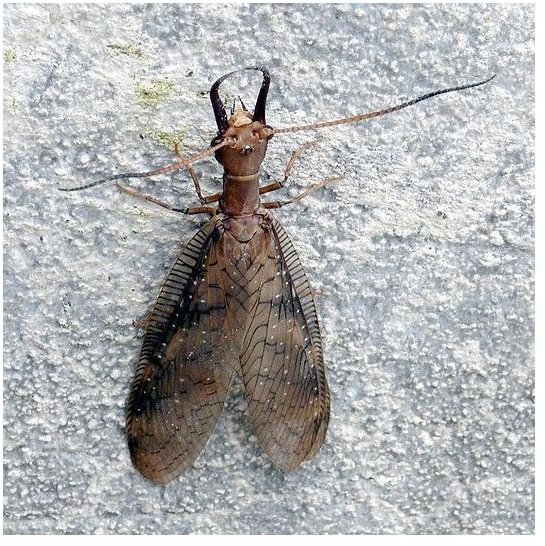
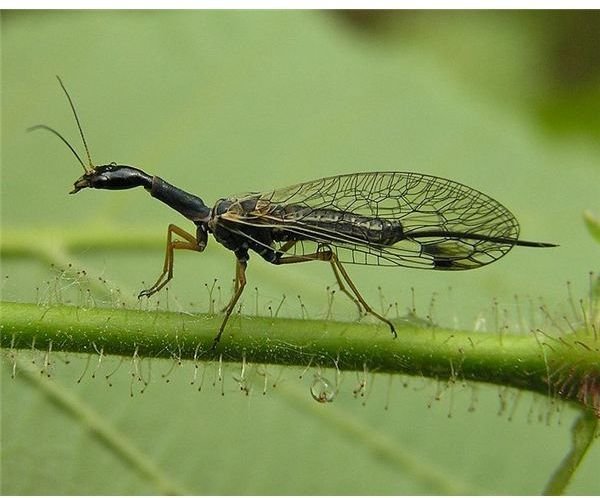
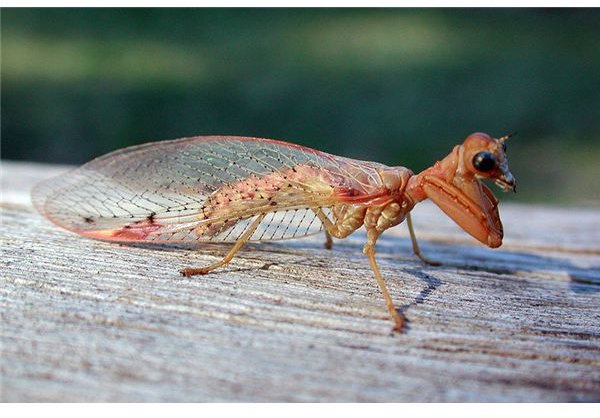
Complete metamorphosis marks the boundary between all previous insects and this next big grouping. Endopterygotes have distinct larval, pupal, and adult stages in their life cycles.
Order Megaloptera
The alderflies, dobsonflies, and fishflies are medium to large aquatic insects, some of them with extra long mandibles. There are about 300 species.
Order Raphidioptera
There are 210 species of snakeflies, which have extra long necks that make them look like snakes.
Order Neuroptera
The lacewings, owlflies, and antlions have large, lace-patterned wings. There are about 6,000 species.
Order Coleoptera
In beetles, the front pair of wings have become a hard covering for the back pair of wings. Fireflies and glowworms are also included in this order. Coleoptera has about 350,000 described species so far, with up to a million possible, which makes it the largest order of known life forms.
Order Strepsiptera
These are 600 species of parasites on other insects, where the females spend their entire lives within the host’s abdomen and never develop legs, wings, eyes, antennae, or other important body parts of free-living insects. Adult males, whose sole goal is to find a female via pheromone, have wide wings that look twisted in flight.
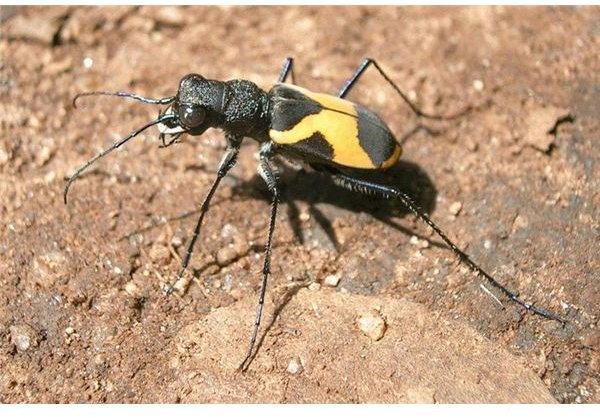


Order Diptera
The true flies include house flies, horse flies, fruit flies, and mosquitoes. You can tell they are the scientifically official flies because their common names have “flies” as a separate word (unlike dragonflies, stoneflies, butterflies, etc.). The back pair of wings have become halteres, which are small appendages with knobs that provide balance during flight. There are about 150,000 described species with potentially 240,000 in existence.
Order Mecoptera
There are 550 species of scorpionflies and hangingflies. The scorpion stinger is actually the end of the male abdomen curved upward with an enlarged genital.
Order Siphonaptera
The 2,000 species of fleas are external parasites of mammals and birds that feed on blood. They no longer have wings, but they can jump impressive heights and distances.
Order Trichoptera
Caddisflies are aquatic insects resembling moths. Their larvae make nets, tubes, and casings of sand, pebbles, leaves, twigs, and other debris glued together, which they use as housing. There are about 12,000 described species, with possibly 50,000 total.
Order Lepidoptera
Butterflies and moths are much loved for their very large, wide, often highly colorful wings. 160,000 species have been described so far.
Order Hymenoptera
Bees, wasps, sawflies, and ants weigh in at 130,000 species. Many species are highly social and form colonies.
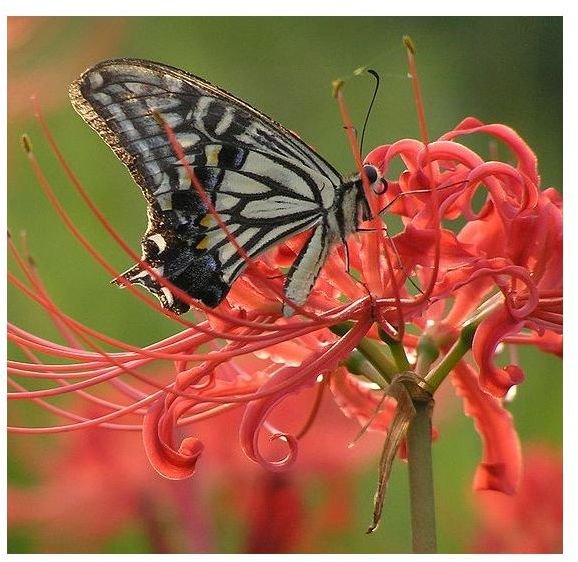

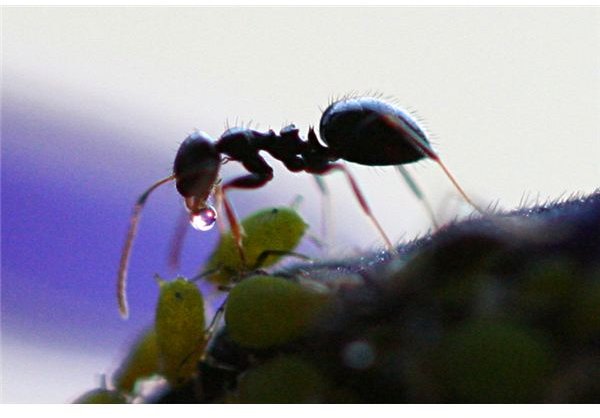
References and Photo Credits
Scientific classification of insects drawn from Tree of Life Web Project: Insecta and all subgroup pages, supplemented by Wikipedia: Pterygota for information gaps.
Images: silverfish (Lepisma saccharina) by Sebastian Stabinger, CC-A 3.0 unported; mayfly (Rhithrogena germanica) by Richard Bartz, CC-A-SA 2.5; damselfly (Calopteryx virgo) by Michael Apel, CC-A-SA 3.0 unported; stonefly (Pteronarcys californica) by Phinfish, CC-A-SA-3.0 unported; grasshopper (Tropidacris violaceus) by Adrian Pingstone, public domain; webspinner (Oligotoma saundersii) by S. Dean Rider, Jr., Free Art copyleft license; earwig (Forficula auricularia) by James K. Lindsey, CC-A-SA 2.5; leaf insect (Phyllium sp.) by Sandilya Theuerkauf, CC-A-SA 2.5; gladiator (Mantophasma zephyra) by P.E. Bragg, CC-A-SA 3.0 unported; shield bug (Acanthasoma haemorrhoidale) by Velela, public domain; thrips (Ponticulothrips diospyrosi) by OpenCage, CC-A-SA 2.5; bark louse (Graphopsocus cruciatus) by Jean-Jacques MILAN, CC-A-SA 3.0 unported; dobsonfly (Corydalus sp.) by Haplochromis, CC-A-SA 3.0 unported; snakefly (Phaeostigma notata) by Beentree, CC-A-SA 3.0 unported; mantid lacewing (Ditaxis biseriata) by Fritz Geller-Grimm, CC-A-SA 2.5; tiger beetle (Cicindela aurofasciata) by L. Shyamal, CC-A-SA 3.0 unported; scorpionfly (Panorpa communis) by soebe, CC-A-SA 3.0 unported; caddisfly by MyForest, CC-A-SA 3.0 unported; butterfly (Papilio xuthus) by Autumn Snake, CC-A-SA 2.5; bee (Osmia ribifloris) by Jack Dykinga of U.S. Dept. Agriculture, public domain; ant by Dawidi, CC-A-SA 3.0.
